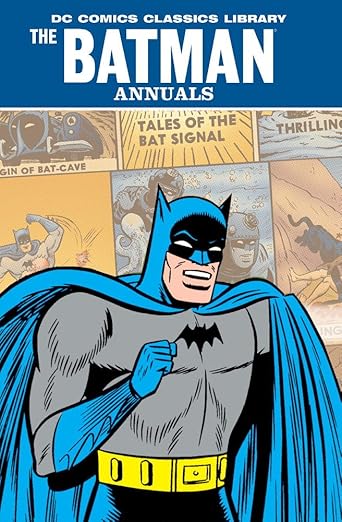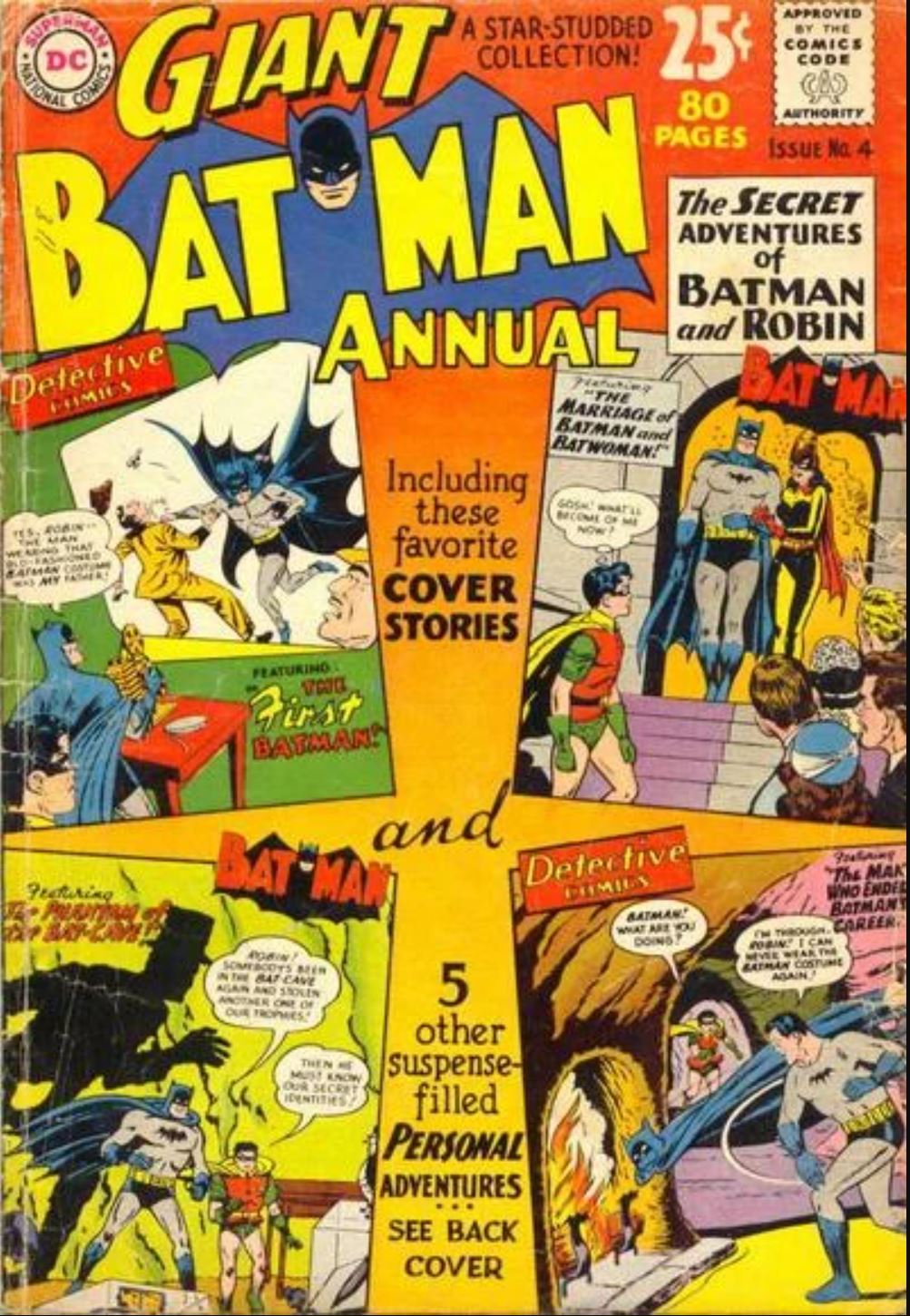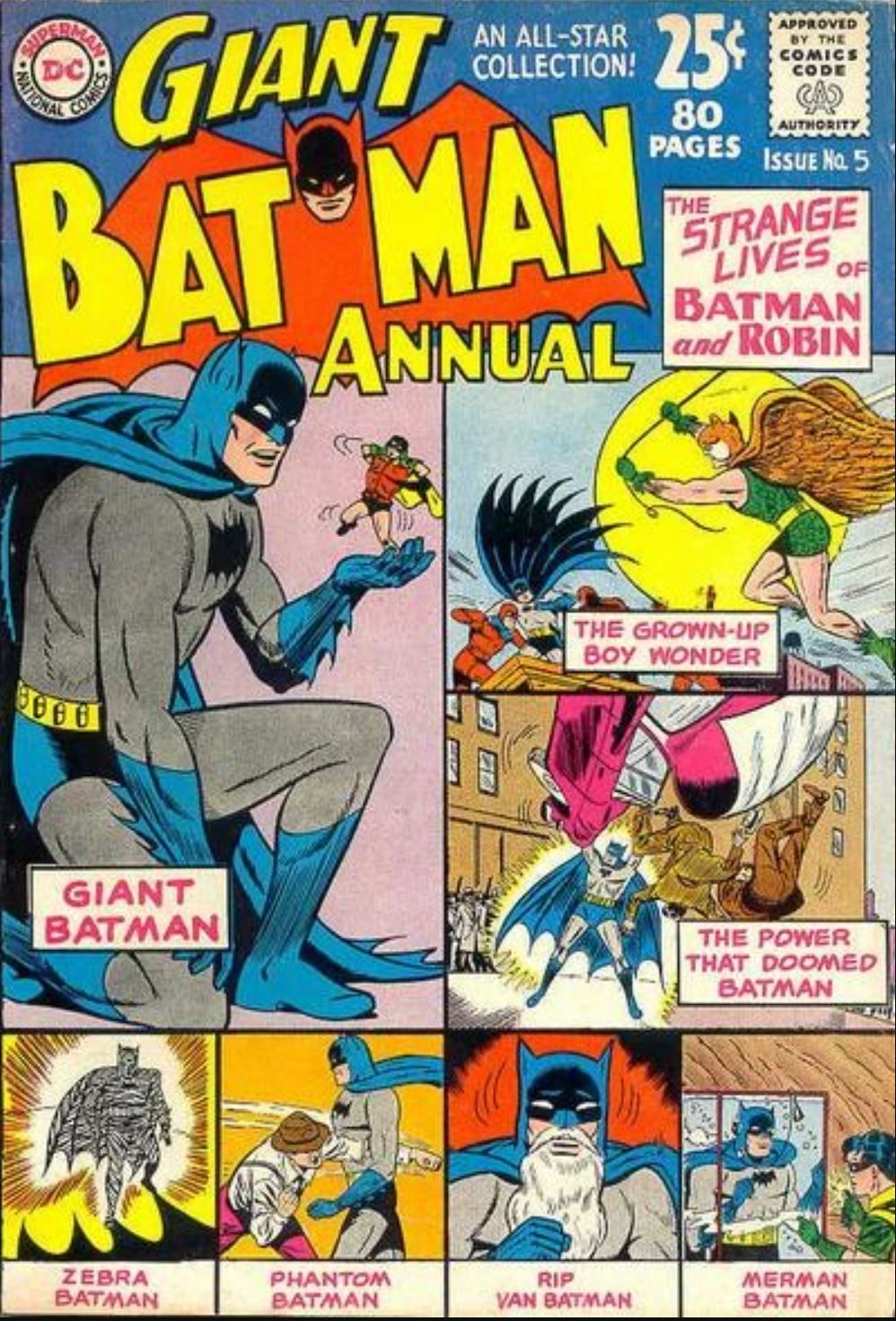

By Bill Finger, Frank Robbins, Dennis O’Neil, Marv Wolfman, Gerry Conway, Mindy Newell, Devin Grayson, Ed Brubaker, Jeph Loeb, Joëlle Jones, Len Wein, Paul Levitz, Mike W. Barr, Mark Waid, Bob Kane, Jerry Robinson, George Roussos, Charles Paris, Irv Novick, Joe Gella, Don Newton, Steve Mitchell, Alfredo Alcala, Joe Brozowski & Michael Bair, Jim Balent, John Stanisci, Brad Rader, Rick Burchett, Tim Sale, Dave Stevens, Brent Anderson, Brian Stelfreeze, Joelle Jones & Laura Allred and many & various (DC Comics)
ISBN: 978-1-7795-2177-4 (TPB/Digital edition)
This book includes Discriminatory Content produced in less enlightened times.
There are many comics anniversaries this year. Some of the most significant – like this one – will be rightly celebrated, but a few are going to be unjustly ignored. As a feverish fanboy I’m plugging here one of the bigger birthdays in a book still readily available either physically or in digital formats…
Cover-dated April 1940, Detective Comics #38 changed the landscape of comic books forever with the introduction of Robin, The Boy Wonder: child trapeze artist Dick Grayson whose parents were murdered before his eyes. He thereafter joined Batman in a lifelong quest to bring justice to the victims of crime. After the Flying Grayson’s killers were captured, Batman #1 (Spring 1940) opened proceedings with a recycled origin culled from portions of Detective Comics #33 and 34. ‘The Legend of the Batman – Who He Is and How He Came to Be!’ before introducing two villains who would each redefine comics in their own very different ways.
There will be more on co-anniversarians The Joker and Robin throughout the year, but today it’s the turn of a wicked thief from the comic’s third tale to be caught in a spotlight…
Batman Arkham: Catwoman re-presents material from Batman #1, 3, 210, 266, 332 & 355, Detective Comics #122, Catwoman volume 1 #2, Catwoman vol. 2 #57, Catwoman vol. 3 #10, Catwoman: When in Rome #4, Catwoman vol. 5, #1 with selections from Who’s Who: The Definitive Directory of the DC Universe #4 & 16.
These cat tales span Spring/March 1940 to September 2018 and, eschewing any kind of editorial preamble, begin tracking track the feline fury from her first appearance as a mysterious jewel thief all the way to the very recent past in a snapshot of action, intrigue romance and career changing.
It all began long ago with disguise artist ‘The Cat’ – AKA “Miss Peggs” plying her felonious trade of jewel thief aboard the wrong cruise-liner and falling foul for the first time of the dashing Dynamic Duo. Swiping the Travers necklace on an ocean cruise in a taut nautical caper courtesy of Bill Finger, Bob Kane & Jerry Robinson, the wily Cat was stopped by fellow debutante Robin and later added the suffix ‘Woman’ to her name to avoid any possible doubt or confusion in her next appearance where she clashed with Batman and the Joker.
That’s not included here (but go see any collection including the contents of Batman #2), but her third appearance – ‘The Batman vs the Cat-Woman!’ (Batman #3 by Finger, Kane, Jerry Robinson & George Roussos) offered a taste of her future exploits and MO as, clad in cape and costume but once again in well over her now cat-masked head, she courted headlines by stealing for – and from – all the wrong people and ended up a catspaw for truly evil men… until Batman and Robin tracked her down…
Who’s Who #4 (1985) provided illustrated profiles of Catwoman of Earths-One & Two by Marv Wolfman, Len Wein, Paul Levitz, Mike W. Barr, Dave Steven & Brent Anderson after which Detective Comics #122 (April 1947) commits ‘The Black Cat Crimes!’ by Finger, Kane & Charles Paris as the sinisterly sultry Catwoman claws her way out of jail and ruthlessly, spectacularly exploits superstitions to plunder the city…

It’s a big leap to the end of the 1960s – and therefore supposedly post Batman TV show campiness – as Batman #210 (March 1969) and Frank Robbins, Irv Novick & Joe Giella bring a new look Catwoman into circulation in nonsensical caper ‘The Case of the Purr-Loined Pearl!’ Here, oh, so terribly gradually, Selina Kyle begins her return to major villain status, by fielding eight recently recruited former convicts as a team of cunning crime-skilled Catwomen in pursuit of a gem score beyond compare.
As the Darknight Detective gradually regained his grim reputation, Batman #266 (August 1975) saw Kyle back in her classic cape & whip costume and again cashing in on superstition in ‘The Curious Case of the Catwoman’s Coincidences!’ by Denny O’Neil, Novick & Dick Giordano. Her increasingly frequent appearances, growing moral ambivalence and status as possible love interest started a process of reformation leading to occasional team-ups with her arch foe and eventually Catwoman was more antihero than villain…
Lovingly limned by Don Newton & Steve Mitchell over Marv Wolfman’s script, Batman #335 offered solo back-up story ‘Cat’s Paw’ wherein Kyle inadvertently foils a scheme to create super assassins for Ra’s al Ghul (another annoying taste of a longer tale not completed here) whilst ‘Never Scratch a Cat’ from #355 (January 1983, by Gerry Conway, Newton & Alfredo Alcala) re-emphasises her unpredictable, savagely independent and increasingly unstable nature and unwillingness to be ignored by Batman when Bruce Wayne starts dating Vicki Vale and Ms Kyle takes murderous umbrage at the seeming betrayal…

Glossing over the painfully dated politics of romance encapsulated here, lets admire the updated Catwoman Profile by Mark Waid & Brian Stelfreeze from Who’s Who in the DC Universe #19 (1992) before Crisis on Infinite Earths unleashes a whole new universe and continuity for DC. Following Batman: Year One, Selina Kyle was reimagined for a darker nastier world; a dominatrix and sex worker inspired by the arrival in Gotham City of a man who dressed like a giant bat and was determined to punish the corrupt and evil…
In the wake of Miller & Mazzuchelli’s epochal rethink, a Catwoman miniseries was released revealing the opening shots in her own war on injustice and privilege. Crafted by Mindy Newell, Joe Brozowski & Michael Bair, ‘Downtown Babylon’ (#2, March 1989) sees Selina confront her sadistic pimp Stan and unwittingly unleash his vengeance on a local nun. It’s a brilliantly manipulative piece of cruelty as Sister Magdalene was once Maggie Kyle – and Selina’s biological sister…
As is often the case you’ll need to seek elsewhere for the rest of the story as here we advance to her time as glamourous jewel thief and troubled soul seeking redemption. Catwoman vol. 2, #57 (May 1998) is set during the Cataclysm storyline when Gotham was wrecked by an earthquake and left to fend for itself by the Federal government. Devin Grayson, Jim Balent & John Stanicsi deliver a relatively quiet but suspenseful moment as Selina seeks to convince eco-terrorist and vegetable monster hybrid Poison Ivy to stop predating embattled human survivors in ‘Reap what You Sow’. It doesn’t go well…

In 2002 original graphic novel Catwoman: Selina’s Big Score led to a far more stylish and compelling reboot, based on crime pulps and caper movies. Catwoman volume 3, #10 sees Selina using her gifts and exploiting old friends and trusted contacts to spring convicted murderer Rebecca Robinson and get her out of the country for reasons she will not share even with Bruce Wayne and her sidekick Holly in ‘Joy Ride’ by Ed Brubaker, Brad Rader & Rick Burchett, after which Jeph Loeb, Tim Sale & Dave Stewart continue their continuity-reworking shenanigans as seen in Batman: the Long Halloween. In #4 of miniseries Catwoman: When in Rome #4, ‘Thursday’ sees Selina still fleeing the repercussions of ripping off and disfiguring Gotham Mob boss Carmine “The Roman” Falcone, leading to a manic clash with mystic femme feline The Cheetah…
The catalogue of crime catastrophes closes with another tempting but frustrating teaser as the first chapter of extended saga ‘Copycats’ (Part 1 by Joëlle Jones & Laura Allred, Catwoman volume 5, #1) finds the felonious feline relocated to Californian city Villa Hermosa and enjoying all those ill-gotten gains. The only real downside is having honest cops chasing her as she tries to find who is fielding a whole squad of Catwomen who look just like her but have no problem shooting anyone who gets in the way of all the robberies Selina isn’t committing…
With covers by Kane & Paris, Neal Adams & Carmine Infantino, Dick Giordano, Ed Hannigan, Brozowski & Bair, Balent & Sherilyn Van ValkenBurgh, Scott Morse, Richard Horie & Tanya Horie, Sale & Stewart, Joëlle Jones & Laura Allred, this is compelling distraction for any fan. Catwoman is a timeless icon and one of the few female comic characters the entire real world has actually heard of. With decades of back history material to enjoy, it’s great that there are primers like this to point the way to fuller exploits. Start planning those acquisitions here and make your move, tiger…
© 1940, 1947, 1969, 1975, 1981, 1983, 1985, 1989, 1992, 1998, 2005, 2018, 2023 DC Comics. All Rights Reserved.





























